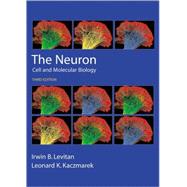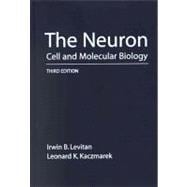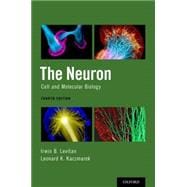The Neuron Cell and Molecular Biology

The Neuron Cell and Molecular Biology
- ISBN 13:
9780195145236
- ISBN 10:
0195145232
- Edition: 3rd
- Format: Paperback
- Copyright: 10/18/2001
- Publisher: Oxford University Press
Rent
Sorry, this item is currently unavailable.
Note: Supplemental materials are not guaranteed with Rental or Used book purchases.
Extend or Purchase Your Rental at Any Time
Need to keep your rental past your due date? At any time before your due date you can extend or purchase your rental through your account.
Summary
The third edition of The Neuron provides a comprehensive first course in the cell and molecular biology of nerve cells. The first part of the book covers the properties of the many newly discovered ion channels that have emerged through mapping of the genome. These channels shape the way asingle neuron generates varied patterns of electrical activity. Next are covered the molecular mechanisms that convert electrical activity into the secretion of neurotransmitter hormones at synaptic junctions between neurons. The second part of the book covers the biochemical pathways that arelinked to the action of neurotransmitters and that can alter the cellular properties of neurons or sensory cells that transduce information from the outside world into the electrical code used by neurons. The final section reviews our rapidly expanding knowledge of the molecular factors that inducean undifferentiated cell to become a neuron, and then guide it to form appropriate synaptic connections with its partners. This section also focuses on the role of ongoing experience and activity in shaping these connections, and finishes with an account of mechanisms thought to underlie thephenomena of learning and memory. New for the Third Edition: This is a thoroughly revised and expanded edition (60 pages longer) and features a new 8-page, 4-color insert as well as the following changes: 1. The mapping of the human genome and that of other species has led to the discovery of numerous new proteins that regulate the excitability, development, and function of neurons. These have been incorporated into the new edition in nearly all of the chapters. 2. The first section of the book,which deals with neuronal excitability, has been reorganized to make it more readable for those students with less background in physical sciences. A new chapter has been added to this section to allow the incorporation of new information on ion channel structure and on the role of channel auxiliaryproteins in modulating neuronal excitability. 3. A new chapter, "The Birth and Death of Neurons," has been added to the last section. In addition to covering new discoveries about the early development of neurons, this chapter describes the recent discovery that new neurons are continually beingformed in certain parts of the adult mammalian brain. It also describes research on stem cells, which holds therapeutic potential for the repair of damaged or diseased brain tissue. 4. The use of imaging technologies in the study of the brain has expanded enormously in the past few years. The newedition describes some of these new approaches. Moreover, the introduction of full color plates now allows many new images to be presented in their original form.









